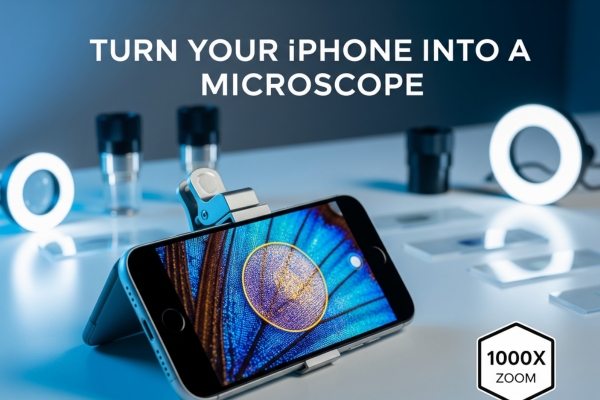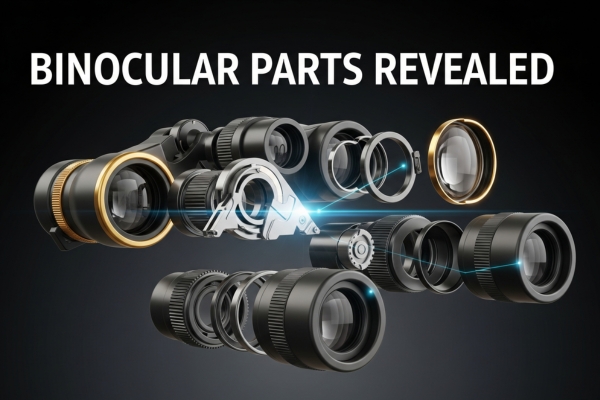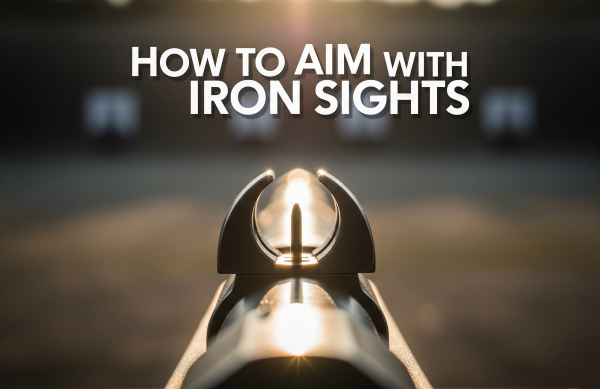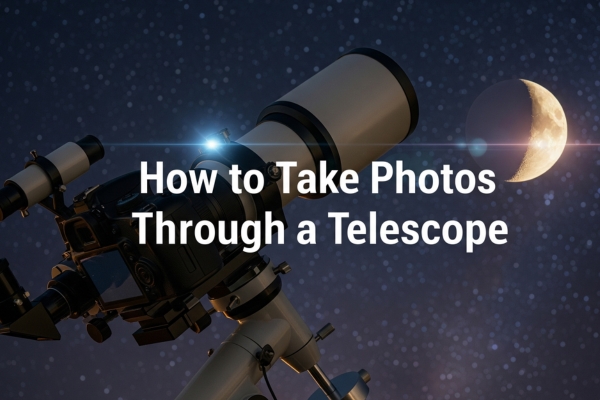

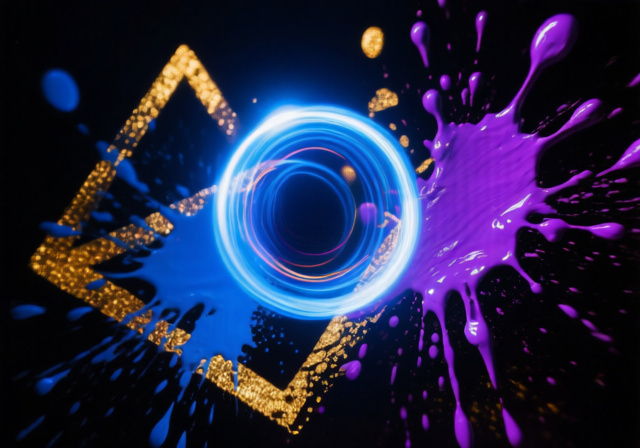

After 15 years of shooting traditional portraits and landscapes, I hit a creative wall. My photos felt technically perfect but emotionally empty. That’s when I discovered abstract photography, and it completely transformed how I see the world through my lens.
Abstract photography is the art of capturing images that emphasize colors, patterns, textures, and shapes rather than recognizable subjects. It’s about breaking free from traditional photography rules and finding beauty in the ordinary by focusing on elements rather than objects.
This comprehensive guide will teach you seven proven abstract photography techniques, essential composition principles, and practical exercises to develop your unique artistic vision. Whether you’re a beginner looking to explore creativity or an experienced photographer seeking fresh inspiration, these methods will help you create compelling abstract images.
What makes abstract photography so powerful is its accessibility. You don’t need expensive equipment or exotic locations—just a willingness to experiment and see the world differently. In fact, some of my best abstract shots were taken in my own backyard using basic gear.
Abstract photography is a method of expressing ideas and emotions with photographed image elements without the intention of creating a traditional or realistic image. By avoiding usual representations of objects, scenes, or elements, it reveals details that are normally ignored and triggers the viewer’s imagination.
Unlike traditional photography that aims to clearly represent subjects, abstract photography focuses on basic elements like line, shape, texture, and color. It uses techniques such as close-ups, camera movement, light manipulation, and unusual angles to create images that emphasize visual elements over literal representation.
The beauty of abstract photography lies in its subjectivity. What one person sees as a chaotic blur, another might interpret as a dance of colors or a glimpse into another dimension. This open-ended nature makes abstract photography deeply personal and endlessly creative.
Abstract photography is important because it allows photographers to break free from traditional rules, develop their artistic vision, and see the world in new ways. It helps build creativity and composition skills that transfer to all photography genres, making you a more versatile and thoughtful photographer overall.
Abstract Photography: A style of photography that doesn’t represent reality but instead uses colors, patterns, textures, and shapes to create images that evoke emotions and imagination rather than showing recognizable subjects.
Based on my experience teaching workshops and analyzing thousands of abstract images, these seven techniques consistently produce the most compelling results. Each method offers unique creative possibilities, and mastering them will give you a complete toolkit for abstract expression.
Intentional Camera Movement (ICM) is exactly what it sounds like—moving your camera deliberately during exposure to create beautiful, painterly effects. I discovered this technique by accident when I tripped while shooting, but the resulting image was so captivating that I’ve spent years perfecting it.
How it works: Use a slow shutter speed (1/15s to 1 second) and move your camera in specific patterns during exposure. Vertical movements create flowing lines, horizontal movements produce streaking effects, and circular motions yield swirling patterns.
Best subjects: Forests, seascapes, city lights at dusk, and colorful landscapes. The key is finding scenes with strong color contrasts and linear elements.
Pro tips: Start with shutter speeds around 1/4 second and experiment with different movement speeds. I’ve found that smooth, fluid movements work better than jerky motions. Try combining vertical panning with slight rotation for dynamic effects.
Quick Summary: ICM creates abstract images by moving your camera during slow shutter exposures, transforming ordinary scenes into flowing, painterly artworks.
Common mistakes: Many beginners make the mistake of moving too fast or too erratically. Remember, you’re creating art, not just blurry photos. Practice controlled movements and review your results to refine your technique.
Macro abstract photography reveals the hidden world of tiny details that we normally overlook. When I first experimented with macro abstracts, I was amazed at how ordinary objects became extraordinary when viewed up close.
What you need: A true macro lens (1:1 magnification) is ideal, but extension tubes or close-up filters work well for beginners. Even smartphones with macro capabilities can produce stunning results.
Best subjects: Water droplets on leaves, flower petals, ice crystals, rust patterns, fabric textures, and everyday objects at close range. The key is finding interesting textures and patterns.
Technique: Use a narrow aperture (f/8-f/16) for maximum depth of field, and focus carefully on the most interesting part of your subject. Consider using focus stacking for sharpness throughout your image.
✅ Budget Tip: Don’t have a macro lens? Try reversing a 50mm lens and holding it against your camera body—many photographers create stunning abstract macros this way!
Lighting matters: Side lighting often works best for revealing textures. I’ve found that early morning or late afternoon light creates beautiful shadows and highlights that make abstract patterns pop.
Light painting is perhaps the most magical abstract photography technique. By using light sources as your brush and darkness as your canvas, you can create ethereal images that seem impossible. My first successful light painting took me three hours of experimentation, but the result was worth every minute.
Essential equipment: A tripod (non-negotiable), a dark environment, and light sources. LED wands, flashlights, glow sticks, and even your phone’s flashlight work wonderfully.
Camera settings: Start with ISO 100-400, aperture f/8-f/11, and shutter speeds of 10-30 seconds. Use bulb mode for exposures longer than 30 seconds.
Techniques to try: Write words or draw shapes in the air. Illuminate objects from unusual angles. Create orbs by spinning lights on a string. Each method produces unique abstract effects.
Color theory application: Use colored gels or RGB LED lights to create vibrant color combinations. I’ve found that complementary colors (blue-orange, red-green) create the most striking contrasts.
This technique transforms ordinary scenes by shooting through semi-transparent or textured objects, creating natural distortion and interesting effects. It’s like having a built-in filter that’s unique to each situation.
Objects to shoot through: Glass bottles, prisms, crystal glasses, sheer fabrics, frosted glass, water droplets on windows, and even textured plastics. I always carry a small prism in my camera bag for unexpected abstract opportunities.
How to execute: Place your object close to the lens (or even touching it), then focus through it to your subject. The closer the object to your lens, the more pronounced the effect.
Creative applications: Try shooting portraits through textured glass for ethereal effects. Shoot city lights through water droplets for bokeh patterns. Shoot landscapes through prisms for rainbow refractions.
Pro tip: Experiment with focus—sometimes focusing on the object itself rather than the background creates intriguing abstract results. I’ve created some of my most unique images by focusing on the distortions rather than what’s behind them.
Unlike ICM where you move the camera, long exposure motion blur captures the movement of subjects while keeping your camera steady. This technique is perfect for creating flowing, dreamy abstract images.
Essential gear: A sturdy tripod and neutral density (ND) filters for daytime long exposures. I recommend a 10-stop ND filter for most situations.
Best subjects: Waterfalls, waves, clouds, moving vehicles, crowds of people, and anything with predictable movement patterns.
Camera settings: Use shutter speeds from 1 second to several minutes depending on your subject’s speed and desired effect. Smaller apertures (f/8-f/16) and low ISO (100-200) help achieve longer exposures.
Creative variations: Zoom blur during exposure creates explosive effects. Combining long exposure with intentional slight camera movement produces ghostly, ethereal images.
⏰ Time Saver: Use your camera’s bulb mode with a remote shutter release for exposures over 30 seconds. This gives you precise control without camera shake.
Reflections offer endless possibilities for abstract photography. They distort reality, create symmetrical patterns, and add layers of visual interest that transform ordinary scenes into extraordinary compositions.
Reflective surfaces to explore: Puddles after rain, glass buildings, polished metal, still lakes, mirrors, and even iPhone screens. I’ve discovered that wet streets at night create particularly stunning abstract reflections.
Techniques: Look for distorted reflections in curved surfaces. Combine reflections with ripples for organic patterns. Shoot reflections at oblique angles for abstract compositions.
Weather opportunities: Rainy days are perfect for abstract reflection photography. Puddles, wet pavement, and rain-streaked windows create natural abstractions everywhere you look.
Composition tip: Don’t just photograph the reflection—include both the reflected object and its reflection for intriguing juxtapositions. This creates visual tension and makes viewers question what’s real.
Training your eye to see textures and patterns is fundamental to abstract photography. Once you start noticing them, you’ll find abstract opportunities everywhere—from the cracks in a sidewalk to the ripples on sand.
Where to find textures: Tree bark, rusted metal, peeling paint, fabric weaves, stone walls, and natural formations. I keep a texture library on my phone for inspiration when I’m stuck creatively.
Lighting considerations: Side lighting reveals texture best by creating shadows and highlights. Early morning or late afternoon light provides the most dramatic texture revelation.
Composition approach: Fill the frame with your texture for maximum impact. Get close enough that the texture becomes the subject rather than just surface detail.
Post-processing enhancement: Increase contrast and clarity to make textures pop. Consider converting to black and white to emphasize pattern over color distraction.
While abstract photography breaks traditional rules, understanding composition principles helps create intentional, compelling images rather than accidental snapshots. Here’s how to apply classic composition concepts to abstract work.
The rule of thirds remains relevant in abstract photography, but with a twist. Instead of placing subjects, you’re positioning visual weight, color masses, or directional lines. I’ve found that off-center placement often creates more dynamic tension in abstract compositions.
Place dominant colors or interesting elements along the third lines. Use intersections for focal points where you want viewers’ eyes to land. Remember, these are guidelines, not rules—sometimes centering creates the powerful symmetry you need.
Color becomes your primary subject in abstract photography. Understanding basic color theory helps create harmonious or intentionally discordant images that evoke specific emotions.
⚠️ Important: Limit your color palette. Abstract images with 2-3 dominant colors often have more impact than rainbow-colored chaos.
Complementary colors (opposites on the color wheel) create vibrant contrast. Analogous colors (adjacent on the wheel) produce harmony. Monochromatic schemes emphasize form and texture over color distraction.
Abstract compositions need balance, but it doesn’t have to be symmetrical. Visual weight can be created through color intensity, size of elements, or texture complexity. I often spend several minutes studying a scene to understand its visual weight distribution before shooting.
Create asymmetrical balance by placing smaller bright elements opposite larger dark ones. Use texture to balance color intensity. Remember that human faces (even abstract ones) carry disproportionate visual weight.
In abstract photography, negative space isn’t just background—it’s part of your composition. Large areas of uniform color or texture create breathing room and emphasize your main elements.
Use negative space to create minimal, zen-like compositions. Let it frame your focal point. Sometimes, the negative space becomes more interesting than your intended subject—that’s when you know you’re thinking abstractly!
One of abstract photography’s greatest strengths is its accessibility. You don’t need a trunk full of expensive gear to create stunning abstract images. Here’s what you actually need, with budget options for each category.
| Equipment | Professional Option | Budget Alternative | Essential For |
|---|---|---|---|
| Camera | Full-frame DSLR/Mirrorless ($2000+) | Used DSLR ($200-400) | Any camera works, even phones |
| Lenses | Prime lenses ($500-1000) | 50mm f/1.8 ($150-200) | ICM, Macro, Light Painting |
| Tripod | Carbon fiber ($300-500) | Aluminum ($80-150) | Long exposures, Light painting |
| ND Filters | Lee Filters ($100 each) | Neewer Kit ($30-50) | Daytime long exposures |
| Macro | 100mm Macro ($500-1000) | Extension tubes ($40-80) | Macro abstracts |
| Light sources | RGB LED wands ($100+) | Flashlights, phone lights ($10-30) | Light painting |
After testing dozens of setups, I’ve found that the camera matters less than your vision. Some of my most successful abstract images were taken with a 10-year-old DSLR and kit lens. The key is understanding how to use what you have creatively.
Post-processing is where abstract photography truly comes alive. The right adjustments can transform a good abstract image into something extraordinary. Here’s my workflow refined over years of experimentation.
Start with the fundamentals: exposure, contrast, and white balance. Abstract images often benefit from increased contrast to make patterns and textures pop. Don’t be afraid to push contrast beyond what you’d use for traditional photos.
White balance can be deliberately “wrong” for creative effect. I often warm up images with blue tones or cool down warm scenes to create mood. Remember, abstract photography prioritizes emotion over realism.
Clarity and texture sliders are your best friends for abstract work. They emphasize mid-tone contrast and make textures more pronounced. Use them judiciously—too much can look artificial, but just right creates tactile images viewers almost feel.
Experiment with saturation and vibrance. Abstract images often benefit from boosted colors, but consider converting to black and white if color distracts from your composition or texture.
Inverting colors creates striking abstract transformations, especially for negative space images. Mirror effects (flipping and blending copies) produce symmetrical patterns reminiscent of kaleidoscopes.
Don’t overlook blur effects in post-processing. Adding radial or motion blur can enhance movement already present in your image or create entirely new abstract directions.
Adobe Lightroom and Photoshop remain industry standards for good reason—their toolsets are perfect for abstract work. However, don’t overlook free alternatives like GIMP or mobile apps like Snapseed for quick abstract enhancements.
For specific effects, consider specialized plugins like Topaz Studio for texture enhancement or Nik Collection for creative color treatments. I use Nik’s Color Efex Pro for 70% of my abstract color work.
The most common question I hear is “Where do you find abstract subjects?” The answer: everywhere! Once you train your eye to see abstractly, you’ll discover photographic opportunities in the most mundane places.
Cities are abstract photography goldmines. Look for reflections in glass buildings, patterns in architecture, and the abstract shapes of infrastructure. I’ve found that downtown areas during blue hour offer particularly rich abstract possibilities.
Construction sites provide temporary abstract installations—think rebar patterns, safety tape configurations, and industrial textures. Always respect safety boundaries and permissions when exploring these areas.
Nature is endlessly abstract when you look closely. Tree bark patterns, rock formations, cloud configurations, and water reflections provide unlimited inspiration. I make it a habit to carry my camera during walks, even short ones.
Seasonal changes offer new abstract opportunities. Ice crystals in winter, blooming patterns in spring, heat distortions in summer, and fallen leaf arrangements in autumn each present unique abstract subjects.
You don’t need to travel far for abstract photography. Your home contains countless abstract subjects: soap bubbles, oil on water, steam patterns, condensation, fabric textures, and shadows through blinds.
Kitchen abstracts are particularly fruitful. Steam rising from coffee, oil patterns in water, vegetable cross-sections, and spice arrangements all make compelling abstract subjects. I’ve created entire portfolios during rainy days at home.
“Bad weather” is perfect for abstract photography. Fog creates mysterious atmospheres, rain produces reflective surfaces, snow simplifies landscapes into minimalist compositions, and wind creates movement patterns.
I actually check weather forecasts for “poor” conditions—fog, rain, and overcast days often produce better abstract images than clear, sunny weather. Keep your camera protected but ready when conditions turn interesting.
To start abstract photography, focus on elements rather than objects. Look for patterns, textures, colors, and shapes around you. Experiment with techniques like intentional camera movement, macro photography, and shooting through objects. Use slow shutter speeds, unusual angles, and close-up perspectives. Most importantly, let go of the need to capture recognizable subjects and instead aim to evoke emotions and visual interest.
A good abstract photo has intentional composition and visual harmony, while a blurry photo looks accidental. Abstract images use deliberate techniques like controlled camera movement, specific focus choices, or intentional motion blur to create effects. They show thoughtful consideration of color, balance, and visual flow. When viewers feel intrigued rather than confused, you’ve succeeded in creating abstract art rather than just a technical mistake.
Abstract photography is both easy and challenging. It’s easy to start because you can use any camera and find subjects anywhere. However, creating compelling abstract images that resonate with viewers requires developed vision and technical skill. The freedom from traditional rules makes it accessible, but mastering composition and technique takes practice. Start simple with one technique at a time, and gradually build your abstract photography vocabulary.
In abstract photography, post-processing limits are more flexible than in traditional photography. Since the goal is artistic expression rather than reality representation, heavy processing is often acceptable. However, if processing obscures the underlying patterns or creates a chaotic appearance, you may have gone too far. The key is maintaining visual harmony—even highly processed abstract images should have balanced composition and intentional color relationships that guide the viewer’s eye.
Abstract photography settings vary by technique. For intentional camera movement, use shutter speeds between 1/15s and 1 second. For long exposures, use bulb mode with ND filters and shutter speeds of 10+ seconds. For macro work, use apertures of f/8-f/16 for depth. Start with ISO 100-400 and adjust as needed. Don’t be afraid to experiment—abstract photography rewards breaking traditional exposure rules to achieve creative effects.
Abstract photography isn’t just about techniques—it’s about developing your unique vision. After teaching hundreds of workshops, I’ve noticed that photographers who find their voice create the most compelling abstract work.
Start by experimenting with all seven techniques, but don’t stop there. Combine methods—try ICM during long exposures, or shoot through objects while doing macro work. I discovered my signature style by accidentally combining light painting with intentional camera movement, creating images that look like captured auroras.
Create projects and series rather than random images. Challenge yourself to explore one theme—reflections, textures, or colors—for a month. I once spent 30 days photographing only abstract patterns in nature, and the resulting collection taught me more than years of scattered shooting.
Most importantly, embrace failure. Some of my most successful techniques came from mistakes that I refined and perfected. Abstract photography rewards experimentation, so keep shooting, keep learning, and most importantly, keep seeing the world with fresh eyes.
Remember, abstract photography is a journey, not a destination. Each image you create teaches you something new about vision, technique, and yourself as an artist. Pick one technique from this guide and try it this week—you might just discover a whole new way of seeing.
For more inspiration and advanced night photography techniques, explore our other creative guides. And if you’re looking to master composition fundamentals that apply to all photography styles, check out our photography composition tips to build a strong foundation for your abstract work.


